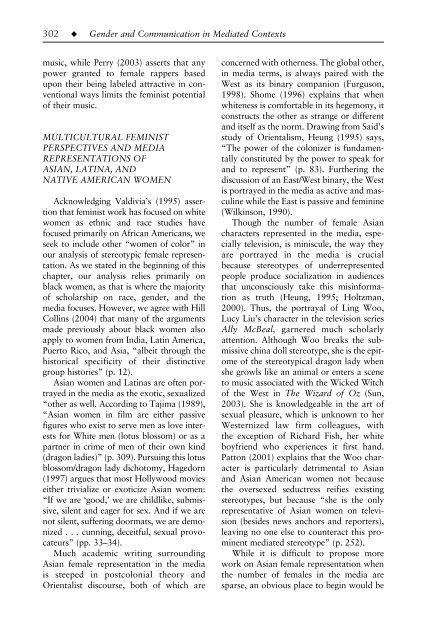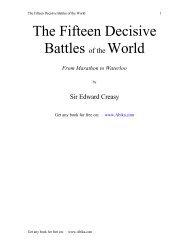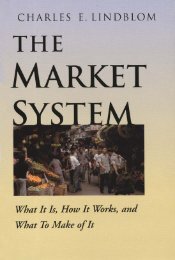Gender, race, and media representation - afghan
Gender, race, and media representation - afghan
Gender, race, and media representation - afghan
Create successful ePaper yourself
Turn your PDF publications into a flip-book with our unique Google optimized e-Paper software.
16-Dow-4973.qxd 6/11/2006 1:42 PM Page 302<br />
302–––◆–––<strong>Gender</strong> <strong>and</strong> Communication in Mediated Contexts<br />
music, while Perry (2003) asserts that any<br />
power granted to female rappers based<br />
upon their being labeled attractive in conventional<br />
ways limits the feminist potential<br />
of their music.<br />
MULTICULTURAL FEMINIST<br />
PERSPECTIVES AND MEDIA<br />
REPRESENTATIONS OF<br />
ASIAN, LATINA, AND<br />
NATIVE AMERICAN WOMEN<br />
Acknowledging Valdivia’s (1995) assertion<br />
that feminist work has focused on white<br />
women as ethnic <strong>and</strong> <strong>race</strong> studies have<br />
focused primarily on African Americans, we<br />
seek to include other “women of color” in<br />
our analysis of stereotypic female <strong>representation</strong>.<br />
As we stated in the beginning of this<br />
chapter, our analysis relies primarily on<br />
black women, as that is where the majority<br />
of scholarship on <strong>race</strong>, gender, <strong>and</strong> the<br />
<strong>media</strong> focuses. However, we agree with Hill<br />
Collins (2004) that many of the arguments<br />
made previously about black women also<br />
apply to women from India, Latin America,<br />
Puerto Rico, <strong>and</strong> Asia, “albeit through the<br />
historical specificity of their distinctive<br />
group histories” (p. 12).<br />
Asian women <strong>and</strong> Latinas are often portrayed<br />
in the <strong>media</strong> as the exotic, sexualized<br />
“other as well. According to Tajima (1989),<br />
“Asian women in film are either passive<br />
figures who exist to serve men as love interests<br />
for White men (lotus blossom) or as a<br />
partner in crime of men of their own kind<br />
(dragon ladies)” (p. 309). Pursuing this lotus<br />
blossom/dragon lady dichotomy, Hagedorn<br />
(1997) argues that most Hollywood movies<br />
either trivialize or exoticize Asian women:<br />
“If we are ‘good,’ we are childlike, submissive,<br />
silent <strong>and</strong> eager for sex. And if we are<br />
not silent, suffering doormats, we are demonized<br />
. . . cunning, deceitful, sexual provocateurs”<br />
(pp. 33–34).<br />
Much academic writing surrounding<br />
Asian female <strong>representation</strong> in the <strong>media</strong><br />
is steeped in postcolonial theory <strong>and</strong><br />
Orientalist discourse, both of which are<br />
concerned with otherness. The global other,<br />
in <strong>media</strong> terms, is always paired with the<br />
West as its binary companion (Furguson,<br />
1998). Shome (1996) explains that when<br />
whiteness is comfortable in its hegemony, it<br />
constructs the other as strange or different<br />
<strong>and</strong> itself as the norm. Drawing from Said’s<br />
study of Orientalism, Heung (1995) says,<br />
“The power of the colonizer is fundamentally<br />
constituted by the power to speak for<br />
<strong>and</strong> to represent” (p. 83). Furthering the<br />
discussion of an East/West binary, the West<br />
is portrayed in the <strong>media</strong> as active <strong>and</strong> masculine<br />
while the East is passive <strong>and</strong> feminine<br />
(Wilkinson, 1990).<br />
Though the number of female Asian<br />
characters represented in the <strong>media</strong>, especially<br />
television, is miniscule, the way they<br />
are portrayed in the <strong>media</strong> is crucial<br />
because stereotypes of underrepresented<br />
people produce socialization in audiences<br />
that unconsciously take this misinformation<br />
as truth (Heung, 1995; Holtzman,<br />
2000). Thus, the portrayal of Ling Woo,<br />
Lucy Liu’s character in the television series<br />
Ally McBeal, garnered much scholarly<br />
attention. Although Woo breaks the submissive<br />
china doll stereotype, she is the epitome<br />
of the stereotypical dragon lady when<br />
she growls like an animal or enters a scene<br />
to music associated with the Wicked Witch<br />
of the West in The Wizard of Oz (Sun,<br />
2003). She is knowledgeable in the art of<br />
sexual pleasure, which is unknown to her<br />
Westernized law firm colleagues, with<br />
the exception of Richard Fish, her white<br />
boyfriend who experiences it first h<strong>and</strong>.<br />
Patton (2001) explains that the Woo character<br />
is particularly detrimental to Asian<br />
<strong>and</strong> Asian American women not because<br />
the oversexed seductress reifies existing<br />
stereotypes, but because “she is the only<br />
representative of Asian women on television<br />
(besides news anchors <strong>and</strong> reporters),<br />
leaving no one else to counteract this prominent<br />
<strong>media</strong>ted stereotype” (p. 252).<br />
While it is difficult to propose more<br />
work on Asian female <strong>representation</strong> when<br />
the number of females in the <strong>media</strong> are<br />
sparse, an obvious place to begin would be




